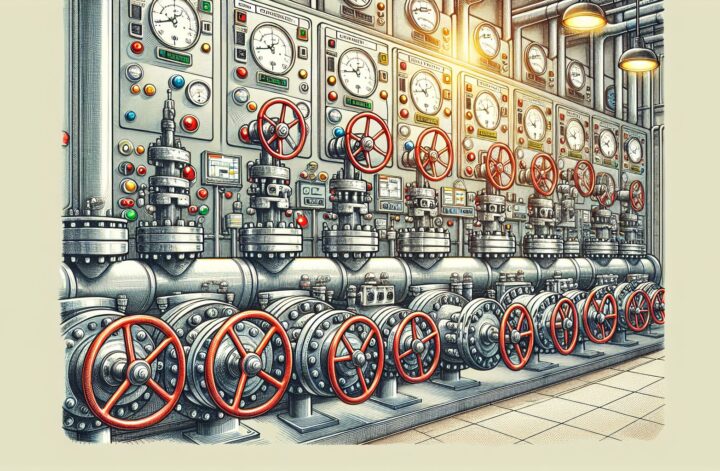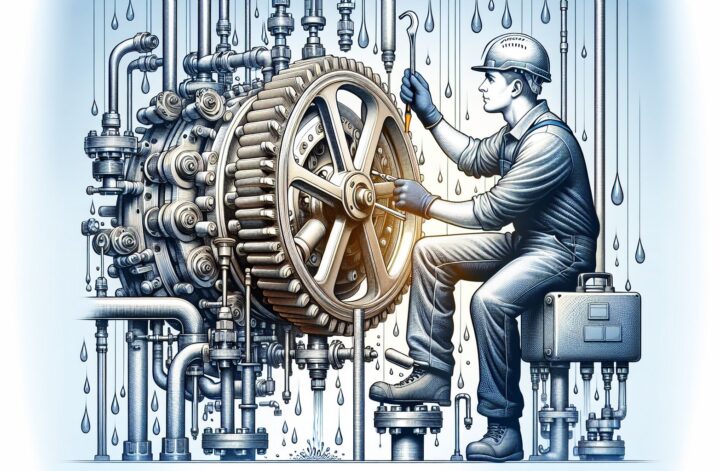A journey inside the fast-paced world of industry is every bit as incredible as a journey to the stars. There are mysteries and complexities at every turn. One of these is the fascinating world of valve control automation, an essential part of the industrial scene that is fast becoming the cornerstone of efficient operations.
Think of valves as the gatekeepers of industrial processes. From controlling the flow of liquids to regulating gases and slurries in a myriad of industries such as oil and gas, water and wastewater, food and beverage, and pharma to name a few, valves play a crucial role in maintaining operational integrity. By automating the control process of these valves, industries can enjoy a smoother, safer, and more efficient process of operation.
More Than Just Automated Valve Operations
In a nutshell, valve control automation or automated valve control means using electronic devices to automatically open, close or modulate the valves without the need for human intervention. Sounds simple enough, right? Chaos would reign in many industrial fields if the valves do not do their jobs correctly, thus the need for a system that allows for precision, timeliness, and efficiency, characteristics that are often missing in manual operations.
From a general perspective, valve control automation can seem like a relatively straightforward topic, but it is, in fact, a complex and intricate balance of various elements. The benefits of this type of system stretch out into various areas of industries. For one, it results in fewer errors.
The automation of valves limits the chances of human error, which can lead to disastrous consequences in certain scenarios. Besides, it also unleashes superior control over the process by integrating sensors and algorithms that can adapt to changes in an industrial procedure without requiring manual adjustments.
Secondly, valve control automation enhances safety. In industries where dealing with volatile substances is a daily matter, manual operation poses a considerable risk to the workforce. With automated valve control, these hazardous operations can be performed remotely, greatly reducing any potential harm.
Furthermore, valve control automation increases efficiency. By automatically managing valve controls, processes can be completed quicker and with a higher degree of accuracy. Industries can thus manage their time and resources better as their automated valve operations will undoubtedly be more efficient compared to their manual counterparts.
Last but certainly not least, it results in significant cost savings. Consider the resources used to train personnel, the risk of human error leading to costly repercussions, or the labor-intensive nature of manual operations. Every bit of these costs adds up, rendering automated valve control an economical approach in the long run.
The Way Forward
As we move forward into the increasingly automated future, industries worldwide are recognizing the value of valve control automation. According to an analysis from MarketsandMarkets, the process automation and instrumentation market, which includes valve control automation, is projected to reach $95.5 billion by 2025 from $61.9 billion in 2020.
While the prospect of fully automated operations may seem daunting to some, it is a necessary evolution in our increasingly interconnected and fast-paced world. Adopting automation in valve control and other areas of operation is not a question of if, but when.
Yet, automation does not necessarily mean the complete absence of human control. Instead, it provides operators with advanced control systems and real-time information, allowing them to make better-informed decisions. As a result, humans are still vital to the entire process, implementing and managing the automation while also being able to focus on other vital tasks.
Adding automation into the mix of valve control does not only revolutionize the operation; it ensures reliability, safety, and efficiency in various industries. Welcome to the future of industrial processes, powered by valve control automation.
Source:
1. MarketsandMarkets
2. A Guide to Automation Body of Knowledge




